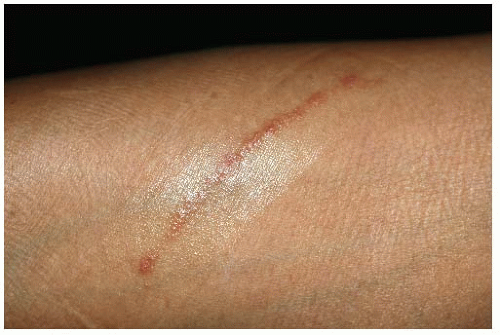Group 1—Highest Potency |
|
Betamethasone dipropionate in optimized vehicle 0.05% cream, ointment, solution (Diprolene) |
|
Clobetasol propionate 0.05% cream, ointment, solution (Temovate) |
|
Halobetasol propionate 0.05% cream, ointment (Ultravate) |
|
Diflorasone diacetate 0.05% cream, ointment (Psorcon) |
Group 2—High Potency |
|
Amcinonide 0.1% ointment (Cyclocort) |
|
Betamethasone dipropionate 0.05% ointment (Diprosone) |
|
Desoximetasone 0.25% cream, ointment (Topicort) |
|
Fluocinonide 0.05% cream, gel, ointment, solution (Lidex) |
|
Halcinonide 0.1% cream, ointment (Halog) |
Group 3—Medium-High Potency |
|
Amcinonide 0.1% cream (Cyclocort) |
|
Betamethasone dipropionate 0.05% cream (Diprosone, Maxivate) |
|
Diflorasone diacetate 0.05% cream, ointment (Psorcon) |
Group 4—Medium Potency |
|
Desoximetasone 0.05% cream (Topicort LP) |
|
Flurandrenolide 0.05% ointment (Cordran) |
|
Hydrocortisone butyrate 0.1% ointment (Locoid) |
|
Hydrocortisone valerate 0.2% ointment (Westcort) |
|
Mometasone furoate 0.1% cream, ointment (Elocon) |
|
Triamcinolone acetonide 0.1% ointment (Aristocort, Kenalog) |
Group 5—Low Potency |
|
Alclometasone dipropionate 0.05% cream (Aclovate) |
|
Betamethasone valerate 0.1% cream (Valisone) |
|
Flurandrenolide 0.05% cream (Cordran) |
|
Fluocinolone acetonide 0.025% cream (Synalar) |
|
Hydrocortisone butyrate 0.1% cream (Locoid) |
|
Hydrocortisone valerate 0.2% cream (Westcort) |
|
Triamcinolone acetonide 0.1% cream or lotion (Aristocort, Kenalog) |
Group 6—Mild Potency |
|
Desonide 0.05% cream (Tridesilon) |
|
Fluocinolone acetonide 0.01% solution (Fluonid, Synalar) |
Group 7—Lowest Potency |
|
Dexamethasone 0.1% gel, ointment (Decadron) |
|
Hydrocortisone 0.5%, 1%, and 2.5% cream, ointment, lotion (Hytone, Synacort, Nutracort) |
It is recommended that the physician become familiar with and use one agent from each category, making the selection on the basis of cost, cosmetic acceptability, and efficacy. |









